
{Update 8/13/18: I started noticing a number of ecommerce retailers being released from video carousels when their category or product pages didn’t contain any video (or if the video just supported the main content on the page). The first signs of the change were on Sunday, 8/12/18 and I’m seeing the changes roll out more widely on Monday, 8/13/18. It’s still early, but I hope the changes stick. I included more information and screenshots below. And you can see clicks return via GSC screenshots, which I added on 8/27/18.}
————————-
In June of 2018, Google rolled out video carousels in the desktop SERPs (after having them live in the mobile SERPs for some time). Google had been testing the desktop feature on and off for a while, but finally pulled the trigger and fully rolled it out. And when I say “fully”, I mean the whole enchilada. More about that soon.
It wasn’t long before many people started noticing the change in the search results, which makes complete sense. The feature is hard to ignore based on the massive real estate the carousels take up and their visual nature.
Here’s an example of Google’s new desktop video carousel:
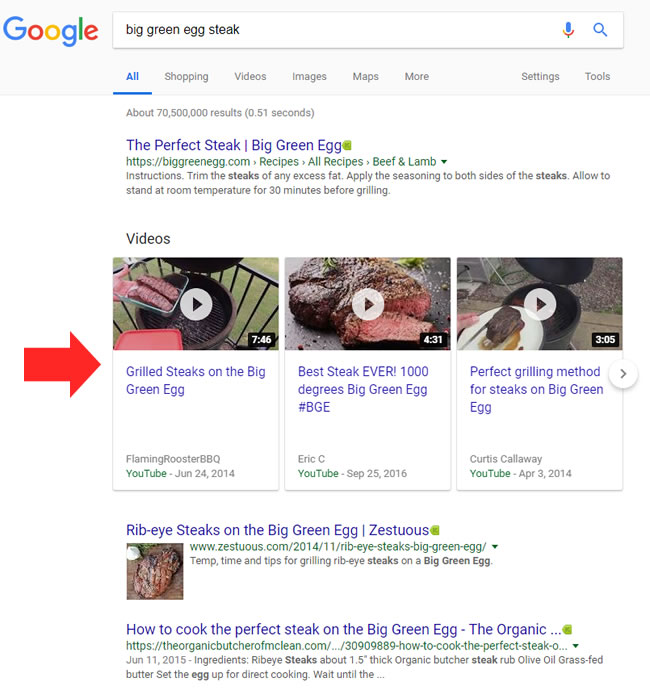
Also, it didn’t take long to notice that Google had seriously turned up the dial on the amount of video carousels surfacing in the search results. For example, the carousels were triggering for many different types of queries, even if it didn’t make much sense to include video carousels for some of those queries.
Heck, they were even triggering for people’s names! I understand that video would make sense for some people, but definitely not for all. It seemed like Google was pushing the new video carousels too hard. Brodie Clark wrote a quick article covering this situation when the carousels first rolled out.
The video carousels are harmless… but are they? Just ask ecommerce retailers:
Some marketers checked out the new video carousels in the desktop SERPs and automatically thought the amazing real estate and visual nature of the carousel would be incredible for sites gaining those listings. But that’s simply not the case for ALL companies.
Ever since the carousels rolled out, Google’s John Mueller has been asked a number of questions about how to get out of the video carousels. Yes, that’s “get out” and not “get in”. Some questions have been asked via Twitter, while others have been asked in John’s webmaster hangout videos. I’ll cover more about Google’s recommendations soon.
Some ecommerce retailers have had a rough time with dealing with the video carousels. For example, some sites have found their way into those video carousels without even having video on their pages! In addition, it seems that many users are simply scrolling right past those carousels when searching for products. And that can lead to a serious drop in clicks and conversions.
My guess is that they think the carousels just contain YouTube videos or other video clips versus links to ecommerce pages. And that’s a terrible thing for ecommerce retailers that used to rank in the normal organic listings (the ten blue links). When you rank in the video carousels, you are removed from the organic listings. Not good.
Here are some examples of sites now ranking in video carousels that used to rank in the standard organic listings. The pages ranking in the carousel either don’t have video, or only provide video as a supporting feature. And these are ecommerce category pages, not video pages. I’ll provide some stats next.
SERP for “fidget spinner 1 dollar”. Alibaba ranks multiple times in the carousel:
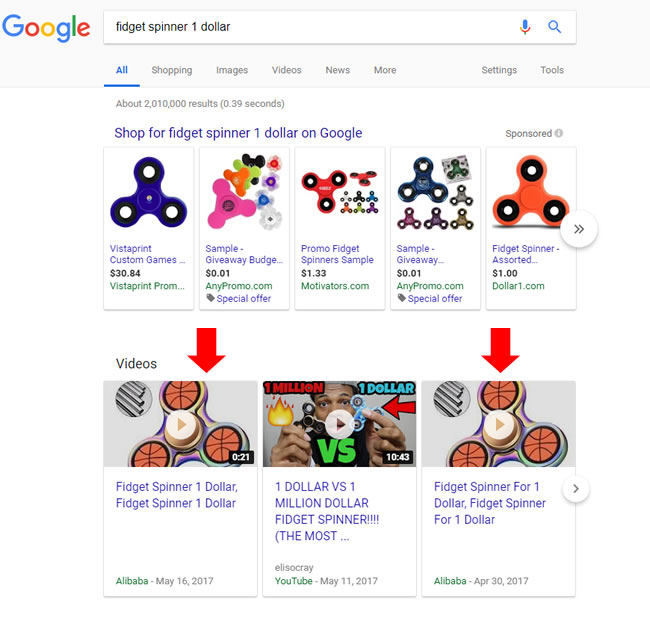
Ecommerce category page on Alibaba.com containing one small video (bottom-right):
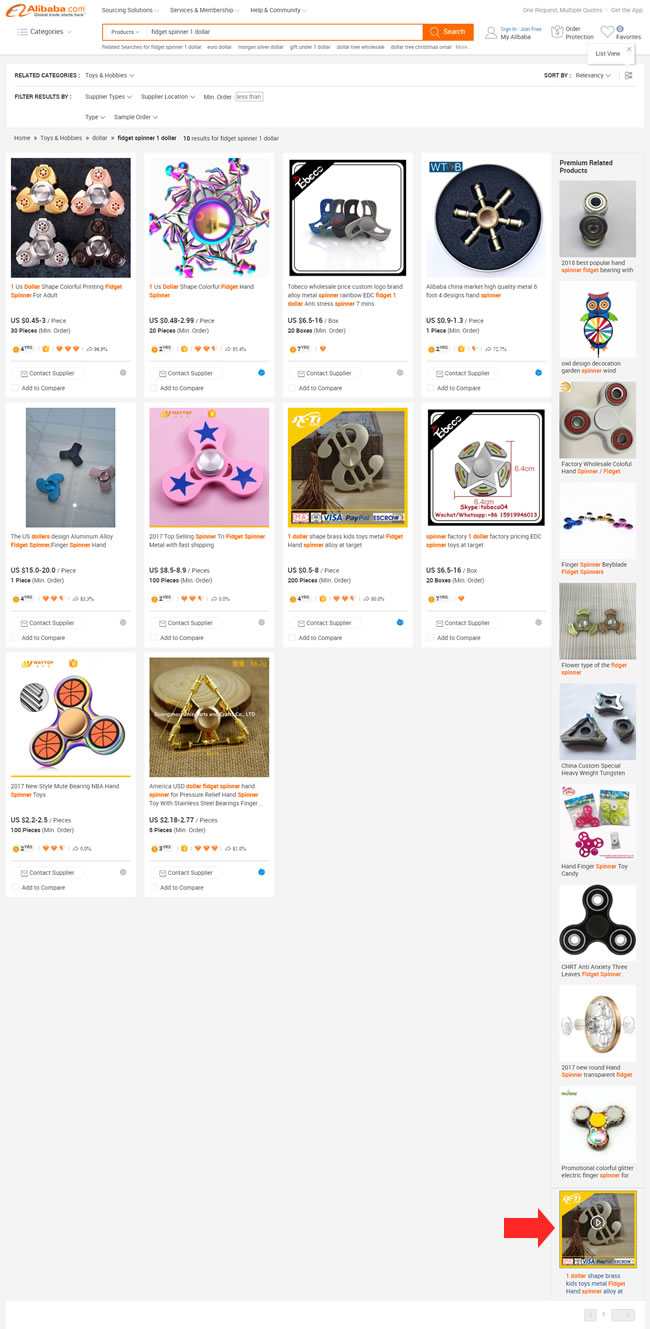
SERP for “jewelry sets for less”. Overstock category page ranking in the carousel:
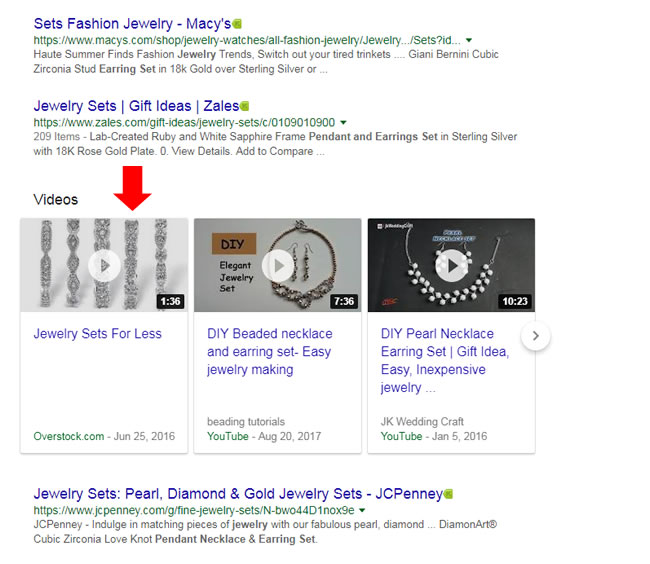
Ecommerce page on Overstock.com without video:
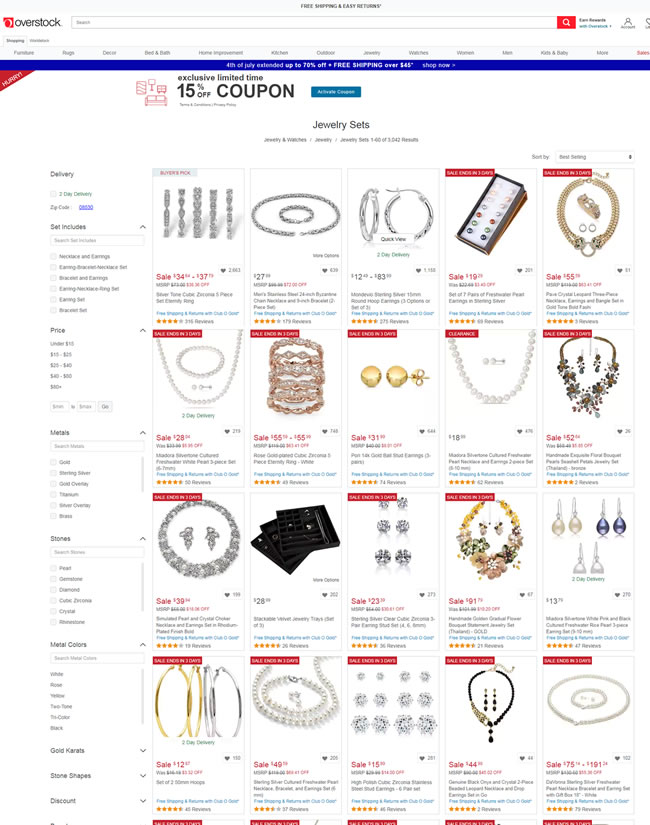
SERP for “roller shades”. Blinds.com ranking in video carousel multiple times:
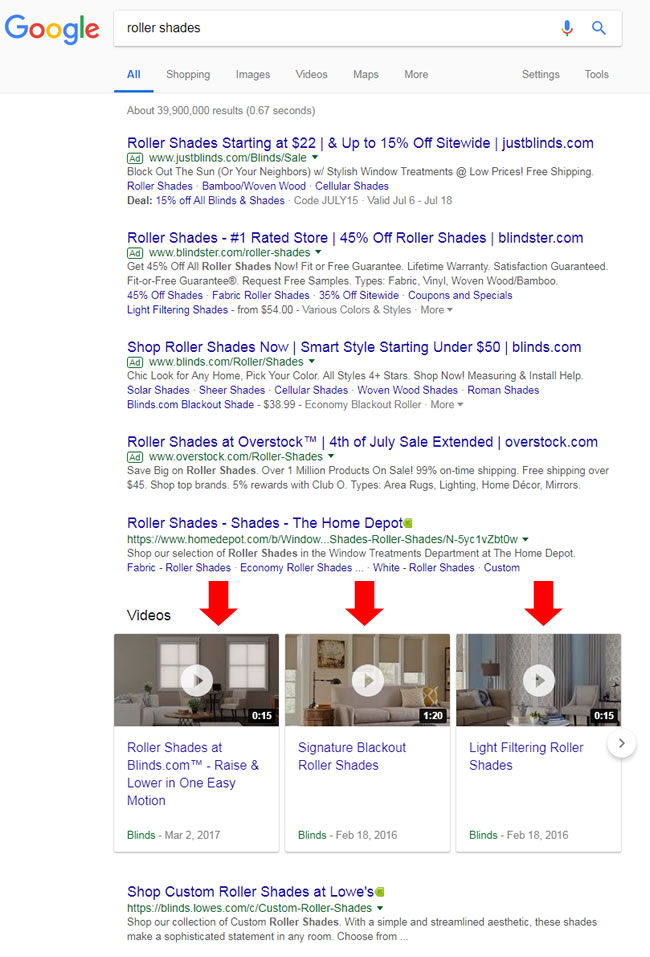
Ecommerce category page on Blinds.com without video:

Show me the data! Clicks and CTR fall off a cliff while impressions remain high:
Again, it seems users are scrolling right by the video carousels when searching for products. How bad is the drop in clicks when comparing ranking in the standard organic listings versus the new video carousels? Pretty darn bad.
For example, I’ve included some screenshots from Google Search Console (GSC) of clicks and impressions from an ecommerce retailer that is experiencing this problem. Note, this a B2B ecommerce retailer, so those clicks can turn into big dollars. The average sale for this company is in the thousands of dollars and not tens of dollars.
Notice how impressions remain the same (or surge) while clicks drop off a cliff. This B2B ecommerce retailer began testing adding video schema markup (and video sitemaps) in late April and got caught up in the new video carousels by accident. They first started showing up in the mobile video carousels (which were already live in the SERPs), and then began showing up in the desktop video carousels when they launched in early June. I’ll explain more about what they are doing now soon.
A big drop in clicks while impressions remain strong for ecommerce category pages caught in the video carousel:
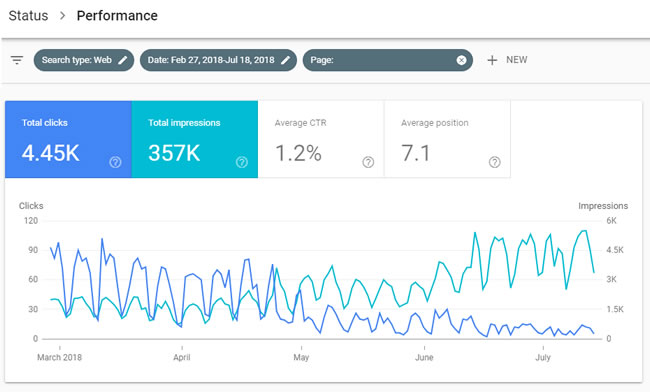
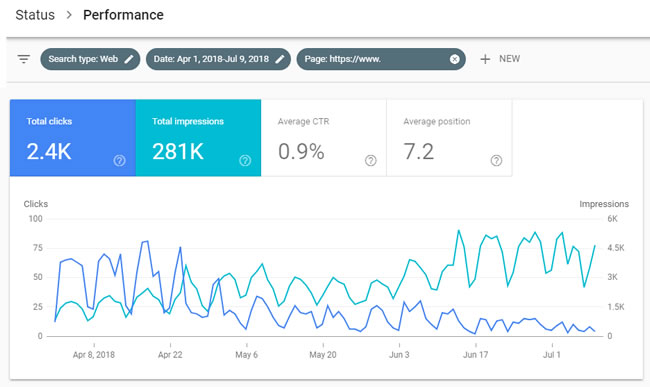
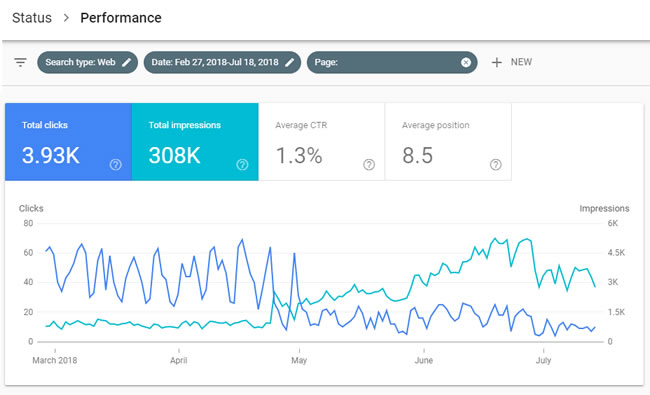
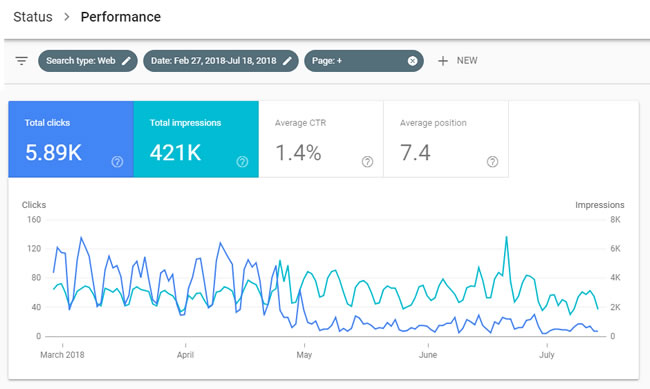
John Mueller’s Recommendations – The Current Fix
I mentioned earlier that a number of people have pinged John Mueller via Twitter and via his webmaster hangout videos about how to get out of the video carousels. John was quick to respond and had some recommendations for getting out of the carousel and back into the main SERPs.
John explained that you can disallow crawling of the video file and thumbnail image, or submit a video sitemap file with an expiration date set in the past.
Here is John’s tweet explaining how to get out of a video carousel:
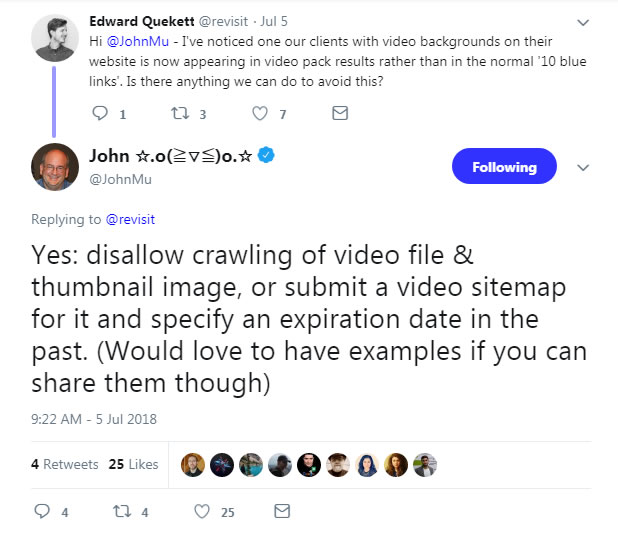
And here is a video from John’s webmaster hangout explaining what you can do:

Again, the B2B ecommerce retailer I mentioned earlier was testing adding video schema markup (and video sitemaps) in late April and got caught up in the new video carousels by accident. After seeing the video carousel problem, they removed all video and video schema markup from the category pages, and then removed the listings from their video xml sitemaps to get removed from the carousels. Unfortunately, none of that worked.
They also tested blocking the video thumbnail image, which didn’t work either. Google ended up creating its own video thumbnails. Then out of desperation, they added video schema and video sitemaps back to add an expiration date set in the past. That didn’t work either. As of today, the site ranks in the video carousels for thousands of keywords. They used to rank in the standard organic listings until the end of April and early May when they started testing adding video. And then the desktop video carousels hit the scene in early June and the situation has gotten even worse.
From a business perspective, the site owner estimates they have lost $300K to $500K in sales since this started happening. Their category pages drive a large percentage of sales for the company, so this is really hurting them financially.
Danger Levels Rise: When all else fails, implement some hacks…
Remember, there is no video on the pages in question, so they had to add a video xml sitemap just to add the expiration date set in the past. Since nothing has worked, they decided to implement some hacks, which is always a dangerous thing to do. I never recommend implementing hacks SEO-wise since they can come back to bite you. That’s potentially happening here as well.
For example, the company started implementing more extreme changes to try and get their listings out of the video carousels. They started 301 redirecting to new urls to see if that would break the connection. That hasn’t seemed to work either (although they did see a few of those pages pop out of the carousels in the short-term).
Yes, they are literally redirecting important category pages that rank well for extremely competitive queries as a last resort. That’s crazy… They also started removing the videos from YouTube (those are the videos that Google was connecting with the site) or making them private. Remember, the videos aren’t on the site, just on YouTube. Those hacks didn’t work either.
Again, with an average sale in the thousands of dollars, and the category pages driving a high percentage of those sales, the company estimates they have lost approximately $300K to $500K since late April or early May when they started ranking in the video carousels.

It just seems crazy that site owners need to jump through hoops while their revenue tanks due to something completely out of their control (and something they didn’t opt into). This ecommerce retailer, in particular, was blindsided in late April and early May when both traffic and revenue dropped off a cliff for important category pages.
A (Better) Fix Is Needed And Brainstorming Possible Solutions
Since video carousels are being populated algorithmically by Google, any change to that algorithm can take a while to hit the SERPs. Google’s John Mueller has explained that recently with regard to Top Stories (another SERP feature that’s gained a lot of attention). John explained that the Top Stories team needs to implement changes to the algo, then heavily test the changes, and then it could roll out down the line. That could take weeks, or even months before hitting the SERPs.
Here is Google’s John Mueller explaining algorithmic changes for Top Stories:

My guess is it’s the same way with video carousels. My recommendation to Google would be to first tone down the algorithm triggering the carousels. They should only trigger when Google is extremely confident that users want to see videos for a specific query. And if video carousels are triggered for a query, then Google should make sure that the pages being ranked in the carousel ACTUALLY contain video. As I explained earlier, some ecommerce retailers that don’t have video at all are being included in video carousels. And that’s killing their revenue.
Beyond the algorithmic part, there should be some way for sites to easily opt out of video carousels (either at the site-level or page-level). Whether that’s an option in Google Search Console (GSC), a tag that can be implemented via code, a directive delivered via the header response, or an addition to xml sitemaps, something needs to be done so sites can make sure they don’t become collateral damage with video carousels.
A mockup of GSC reporting showing a page being blocked from showing in video carousels:
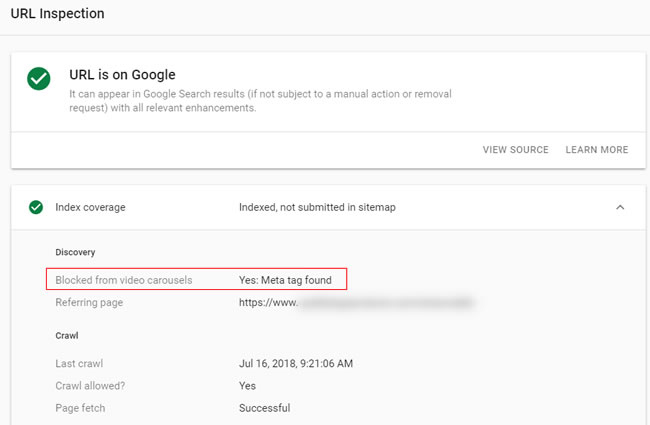
**Update 8/13/18: Many ecommerce retails are being released from the video carousels.**
Actually, a number of video carousels are simply being removed from the SERPs for some ecommerce queries. This is outstanding news for ecommerce retailers that were trapped in video carousels when they didn’t even have video on those pages (or if the video just supported the main content). I began noticing these changes on Sunday, 8/12/18, and then saw the changes roll out more widely on Monday, 8/13/18.
For example, I’ll use the queries from earlier in the post to demonstrate what I’m seeing now. I hope this change sticks. I know the B2B ecommerce retailer I documented in this post is ecstatic right now. But the company knows that anything can change in a heartbeat… I’ll post more updates soon. Stay tuned.
1. Blinds.com had a category page for roller shades (without video on it) trapped in a video carousel. It’s free now:
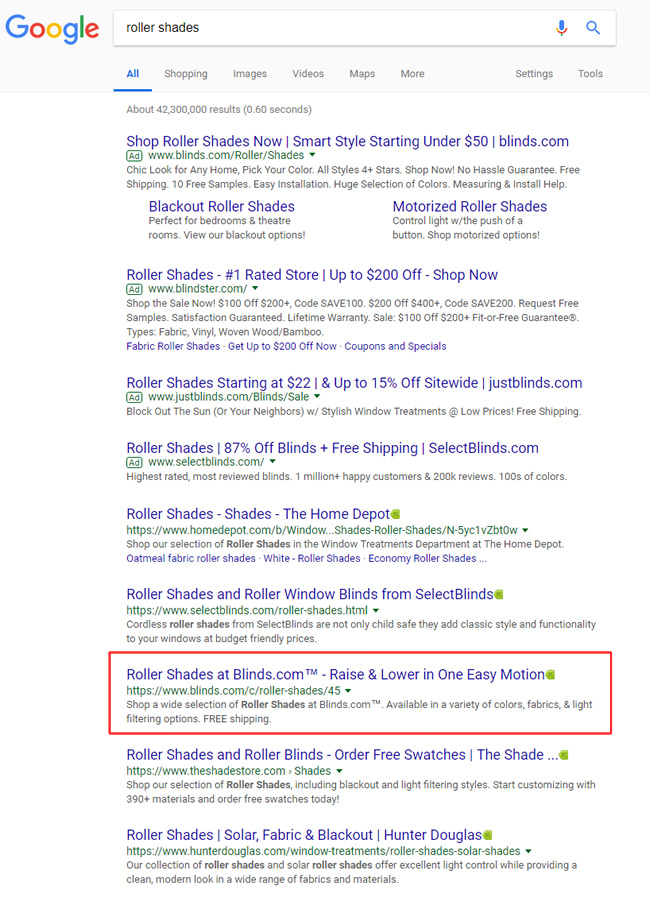
2. Overstock also had a category page without video stuck in a video carousel. Well, not anymore:
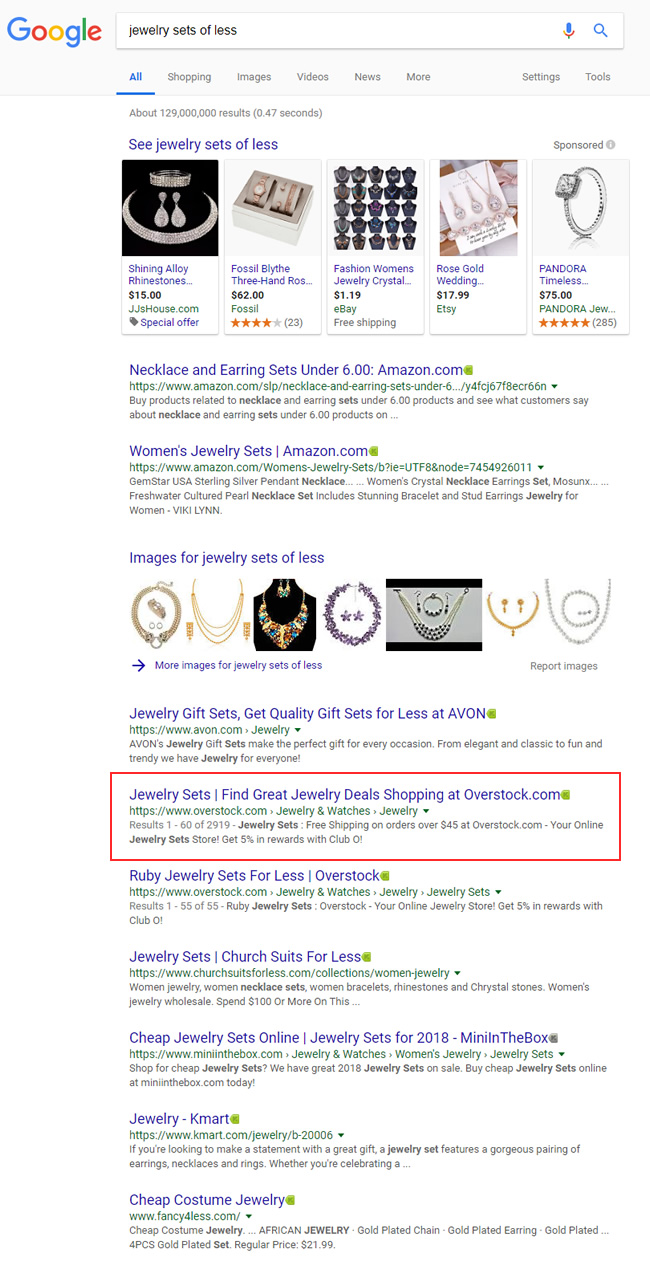
3. And Alibaba was released from the video carousel for this query, even though the carousel remained in the search results. But now it’s just populated with YouTube videos (which is accurate):
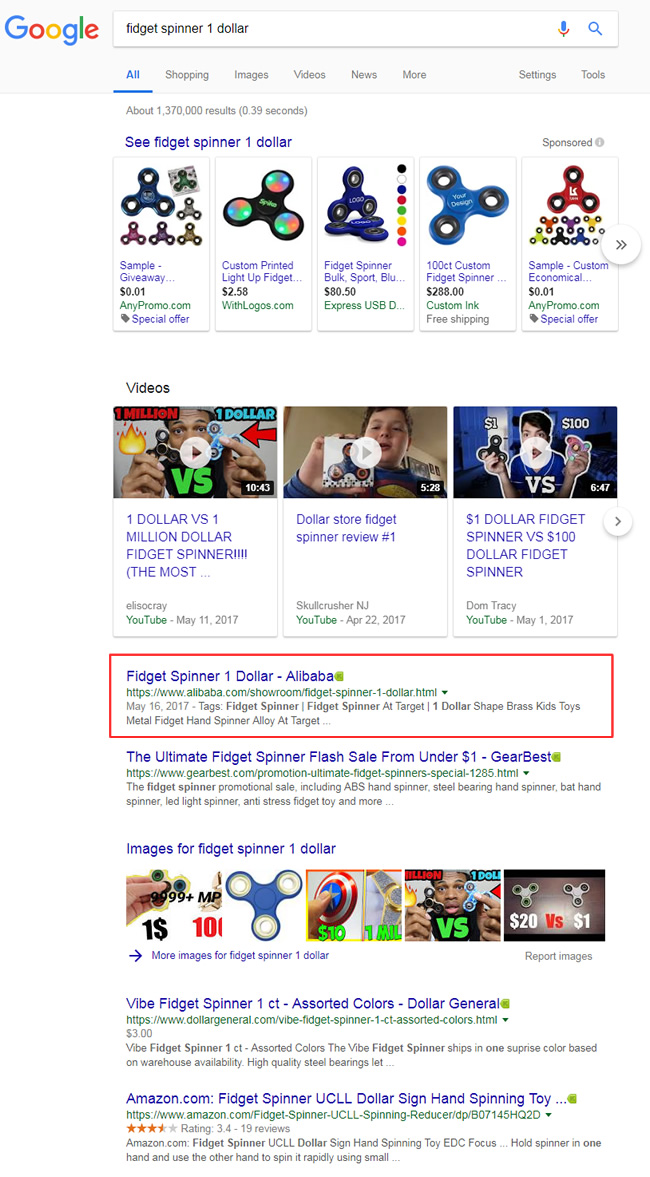
Clicks Return!
Regarding the e-commerce retailer I documented in this post, it’s been amazing to see their clicks return. When they were trapped in the video carousel, their impressions remained strong, but their clicks dropped off a cliff. Well, as soon as they were released from the carousels, those clicks came back.
Here are three different screenshots from Google Search Console (GSC) demonstrating the changes to key category pages that were once trapped in the carousel. Considering this retailer lost between $600K-800K in revenue due to the problem, they are pretty happy to be back in the standard organic results again.
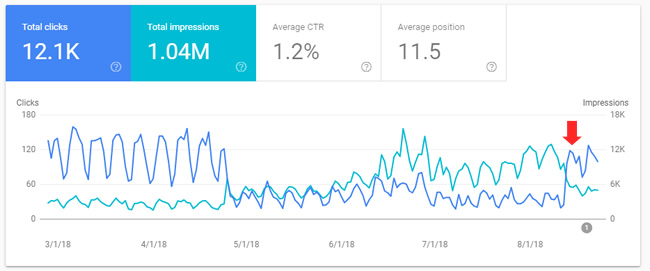
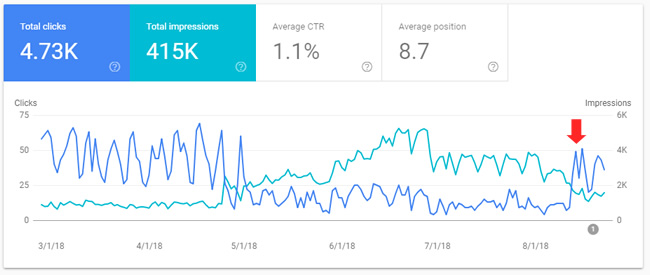

It’s great to see Google make the right changes here. It took a bit of time, but as I explained earlier, that can happen when Google needs to implement changes, test those changes, etc.
**End Update**
——————————
Summary – Escaping video carousels is harder than you think
For ecommerce retailers mistakenly caught up in video carousels, this situation has been a horrorfest. Some have been blindsided by being included in the new video carousels. And then combine that with users that are scrolling right past those carousels when searching for products. And that’s after ranking well in the standard organic search listings where users were clicking their listings. As I documented above, revenue has dropped significantly for those important category pages.
My hope is that Google implements changes both algorithmically (refining the video carousel algorithm) while also providing ways for site owners to opt-out of video carousels (via GSC, meta tags, the header response, or xml sitemaps). If not, the bleeding will continue, sites will continue to implement hacks to try and get out of video carousels, and users will keep scrolling right past those carousels when searching for products. I’ll keep monitoring the situation and provide an update if I see any changes roll out. I hope that’s the case. Stay tuned.
GG
